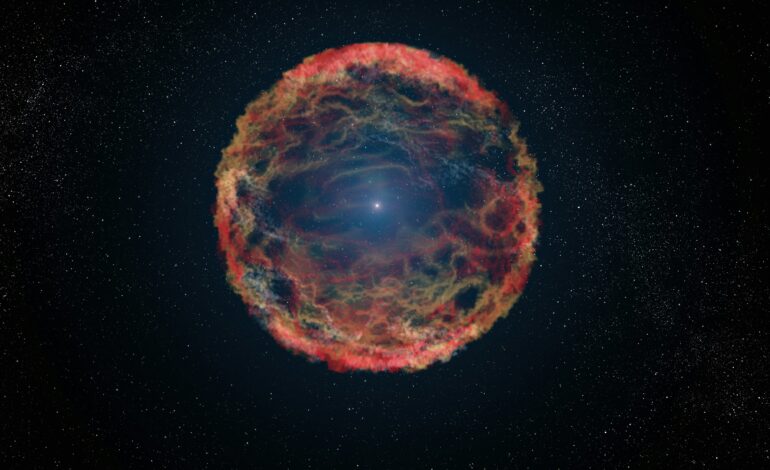Astronomers Capture Unique 3D Shape of Supernova SN 2024ggi

A team of astronomers, led by the University of Hawaiʻi Mānoa, has achieved a significant milestone in astrophysics by mapping the three-dimensional shape of a supernova as it exploded. The event, designated as SN 2024ggi, occurred in the nearby galaxy NGC 3621 and was observed during the critical shock-breakout phase, which typically lasts only a short time. This groundbreaking observation reveals that the supernova took on an elongated, olive-like shape rather than a perfect sphere.
The discovery was made in April 2024, with the rapid-response initiative allowing astronomers to act swiftly. Chris Ashall, an assistant astronomer at UH Mānoa’s Institute for Astronomy, expressed the excitement surrounding this rare event, stating, “As soon as the alert came in, we knew this was the kind of relatively nearby explosion you might see once in a decade.” This urgency highlights the importance of coordination among observatories to capitalize on fleeting astronomical events.
Rapid Observations and Groundbreaking Techniques
Following the initial detection of SN 2024ggi, the team quickly submitted an urgent request to use the Very Large Telescope (VLT) in Chile. The telescope was directed to the supernova approximately 26 hours after its discovery. Utilizing the FORS2 instrument, astronomers captured polarized light during the shock breakout, which provided essential data within a narrow time frame.
The analysis employed spectropolarimetry, a technique that measures how light polarization varies with wavelength. This allowed the research team to reconstruct the three-dimensional structure of the ejected material. Their findings, published in Science Advances, indicated an axisymmetric and prolate shape, which flattened as it interacted with surrounding gas. This persistent axis suggests that large-scale mechanisms may significantly influence how massive stars explode.
Insights into Stellar Evolution
Through follow-up modeling and spectral observations, researchers identified the progenitor star of SN 2024ggi as a red supergiant with a mass approximately 12–15 times that of the Sun and a radius around 500 solar radii. These characteristics align with typical Type II supernova explosions and help explain the observed short and intense shock-breakout signal. The unique geometry at breakout provides new parameters for astrophysicists to refine their models of stellar evolution and death.
Additionally, the coordinated campaign has extended to include observations from NASA’s James Webb Space Telescope (JWST), which is currently tracking the expanding debris from the explosion. Early spectra from JWST indicate the presence of clumpy material where molecular formation appears to be occurring. The collaboration between the UH Mānoa team and JWST is combining infrared and optical data, creating a comprehensive view of the cooling ejecta and its dust and molecule formation.
Researchers emphasize that the discovery of the “olive” shape not only contributes to our understanding of supernovae but also highlights the significance of rapid alerts and flexible scheduling. These strategies enable astronomers to capture short-lived phases that offer valuable insights into stellar phenomena. For the University of Hawaiʻi Mānoa and its collaborators, this event serves as an example of how local scientists can integrate into global observational campaigns, ultimately advancing knowledge in the field of astrophysics.






